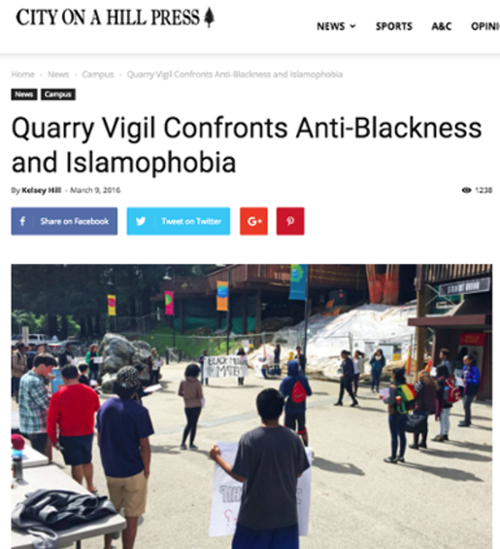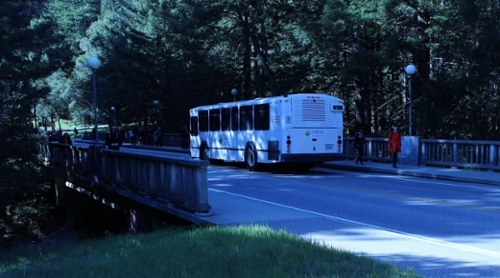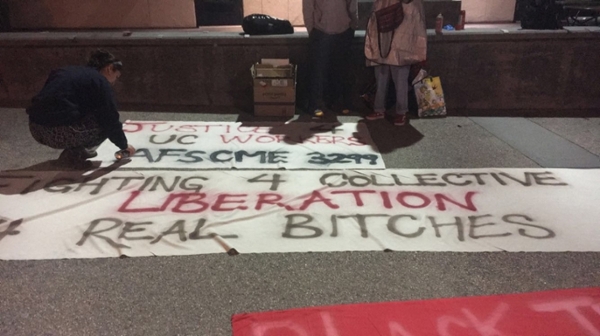Muslim Students Capture Campus Climate: A Photovoice Project
For over 20 years, Muslim students at UC Santa Cruz (UCSC) have fought for a prayer space/meditation room on campus. In 2017, UCSC campus administrators met with the Muslim Student Association (MSA) to understand the needs of the Muslim student community, particularly after the inauguration of the 45th U.S. president, which escalated incidents of anti-Muslim racism across the state. While accommodations such as halaal food options and temporary prayers spaces were offered to students, more permanent solutions were still lacking. To-date, UC Santa Cruz remains the only UC campus without a dedicated prayer space for the Muslim student community.
To better understand what factors contribute to an inclusive campus for Muslim students amidst contentious political climates, I collaborated with a diverse group of Muslim students consisting of a wide array of different ages, races, sexualities, disciplines, levels of campus engagement and religiosity. Our group of nine undergraduate and graduate students used photovoice research methods to document and discuss our community’s strengths, concerns, and challenges in order to better communicate to the campus administration. Photovoice is a participatory-action research methodology based on grassroots social action that centers participants’ experiences through photographic imagery, personal reflection and critical dialogue with key stakeholders (Wang & Burris 1997). Together we documented over 100 photographs based on our research question, How does the Santa Cruz campus and community influence your sense of wellbeing as a Muslim student?
We translated our findings into a well-attended photo exhibit and and also distributed our action plan widely to peers, administrators and faculty. Our findings suggest that a prayer space is only a first step to meeting the needs of the Muslim students at UC Santa Cruz and there is still enormous work to be done to address campus climate. Muslim students’ well-being is shaped by religious and racial hostility such as being personally attacked for wearing a hijab on and off campus as well as experiencing racism for being black and Muslim. The lack of data about the Muslim student community - a result of being racially categorized as “white” on campus climate reports- further exacerbates the lack of understanding and access to institutional resources to support the Muslim student community. As a result of student advocacy efforts, campus administrators have promised to deliver an interfaith space by Fall 2019, though Muslim students have expressed concerns on whether the potential space will serve them well.
The following are three excerpts from different Muslim students’ photovoice projects:

Vigil for #OurThreeBrothers: Challenging Anti-blackness
By: A Sudanese Muslima
“Islamophobia is real. There have been so many Islamophobic ‘incidents’ both on and off campus, however there is always a lack of acknowledgement and support from the UCSC community. It takes a mental toll on people to continually have to deal with violence, and have to advocate for their communities because they know nobody else will. We often see students advocating for themselves, especially when the institution disregards their pain. This action, Vigil for #OurThreeBrothers, happened after the murder of three young Black mxn: Muhannad Adam Tairab, 17; Adam Kamel Mekki, 20; and Mohamedtaha Omar 23, إِنَّا لِلّهِ وَإِنَّـا إِلَيْهِ رَاجِعُونَ on February 14, 2016. Black Muslims had been murdered yet there was a lack of outcry, from either the non-Muslim community or the Muslim community and it was due to both Islamophobia and anti-Blackness. Black Muslims students were ones who put this together. We tend to forget intersectionality and we tend to dismiss the impacts of Islamophobia and anti-Blackness have on students on this campus. Black Muslims may make up a small percentage on this campus, but they exist and they are impacted. This institution needs to do better, we all need to do better, at actively combating anti-Blackness and Islamophobia. Anti-Blackness is real.”

Safe Transportation?
By: A Latinx Muslim
“I do my best to avoid busses at all times, unless if I really need to go downtown. I dread going on them all the time. It's already difficult moving around as a POC, but even more as a visible Muslim. I remember hearing a story about a Hijabi who experienced the whole bus chanting Islamophobic things... and I remember that every time I'm on the bus. When I do go on buses, I witness people staring at me a lot, and in very unfriendly ways, and avoiding me. Even when the bus is super full and the seat next to me is open, they won't sit next to me. Experiences like this really make me feel unwelcome at this university.”

Self-Advocacy
By: A Palestinian Muslima
“This image portrays how hard it is for Muslim students, as well as many other marginalized groups, to be heard on campus. In preparing for the Women’s March that my friend and I co-organized, we had very little help when it came to preparation and even when it came to other organizations coming out and supporting. One problem with this campus is the fact that there are no SWANA (South-West Asia and North Africa) institutions- by this I mean that there is no established “MENA” or “Middle East” resource center for students from SWANA, yet there are still resource centers for many other major minority groups on campus. Due to the fact that there is no such established SWANA institution, it is often hard for SWANA students to get funding for different events that they can organize.”
**Research from this project was sponsored by the Student Success Evaluation and Research Center (SSERC) and the Chancellor’s Graduate Internship Program. The photovoice exhibit was made possible through funds from the Graduate Student Association’s Solidarity Committee, Oakes College Provost, PRISM: Student Coalition for Gender, Sex, and Sexuality, College 10, Office of Diversity, Equity & Inclusion and the Muslim Student Association.
